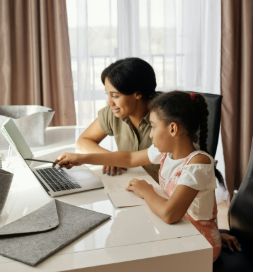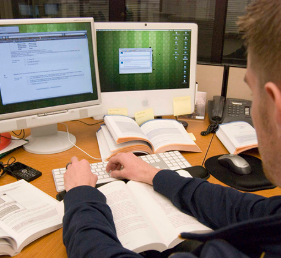Virtual learning has become a big part of education, offering flexibility and new opportunities. However, spending long hours in front of screens can be tiring and affect focus, health, and well-being. Finding a healthy balance of screen time is important for students, parents, and teachers alike.
Here are some friendly tips to help balance screen time while making the most of virtual learning.
1. Take Regular Breaks
Encourage short breaks every 30 to 60 minutes to rest your eyes and stretch your body. Simple activities like standing up, walking around, or looking outside can reduce eye strain and boost energy.
2. Follow the 20-20-20 Rule
To protect your eyes, every 20 minutes look at something 20 feet away for at least 20 seconds. This easy exercise helps reduce digital eye strain and keeps your vision comfortable.
3. Create a Comfortable Learning Space
Set up a quiet, well-lit area with a comfortable chair and desk. Good posture and proper lighting help reduce physical discomfort from long screen sessions.
4. Balance Screen Time with Offline Activities
After online classes, spend time on activities that don’t involve screens—reading a book, drawing, playing outside, or hobbies you enjoy. These breaks refresh your mind and body.
5. Use Technology Wisely
Make use of apps and settings that reduce blue light from screens, especially in the evening. Some devices have “night mode” options that help minimize eye fatigue.
6. Set Clear Boundaries
Work with teachers and family to establish reasonable daily limits on screen time beyond classes. Scheduling specific times for homework, breaks, and leisure screen use can keep things balanced.
7. Stay Social Beyond the Screen
Virtual learning can feel isolating, so plan safe, in-person activities or phone/video calls with friends and family. Social connection supports mental health and reduces the feeling of being “stuck” in front of devices.
8. Practice Mindfulness and Relaxation
Taking a few minutes each day for deep breathing, stretching, or meditation can help manage stress and improve focus during and after screen time.
Final Thoughts
Balancing screen time is key to staying healthy and focused in virtual learning. By taking breaks, creating a good environment, and mixing screen activities with offline fun, students can enjoy the benefits of online education without feeling overwhelmed.
If you’d like, I can help create articles on related topics such as “Healthy Habits for Virtual Learners” or “Tips for Parents to Support Screen Time Balance.” Just let me know!





